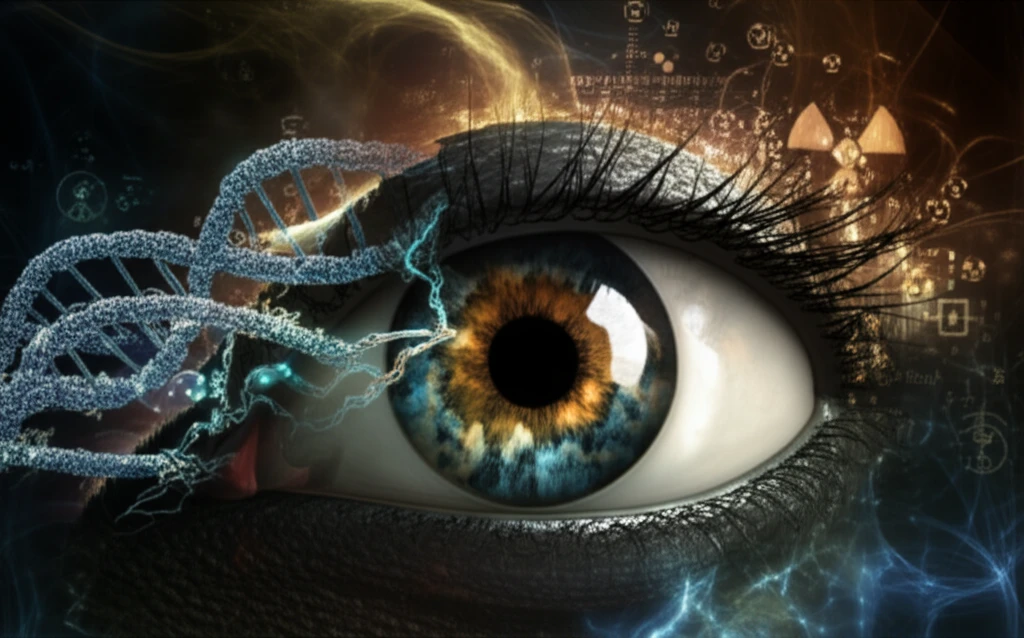
Mouse Strains and Radiation: Unlocking the Secrets of Eye Health
"Discover how different mouse strains react to low-dose radiation, potentially revolutionizing our understanding of cataract formation and radiation protection for the human eye."
The lens of the eye is known to be particularly sensitive to radiation, leading to concerns about cataract development, especially for individuals exposed to radiation through medical treatments or occupational hazards. Recent changes in safety standards highlight the need for a deeper understanding of how radiation affects the lens at a cellular level.
Scientists are focusing on the lens epithelium, a single layer of cells covering the front of the lens. This layer is crucial for lens health, and damage to its DNA can disrupt normal function, potentially leading to cataracts. Research suggests that understanding how cells repair DNA damage after radiation exposure is key to preventing long-term eye damage.
A new study investigates how different strains of mice respond to low doses of radiation, examining the DNA repair mechanisms in their lens epithelial cells. By comparing these responses, researchers hope to identify strains that are particularly sensitive or resistant to radiation, providing valuable models for future studies on cataract formation and personalized radiation protection strategies.
Why Mouse Strains Matter: Unveiling DNA Damage Responses

The study exposed four different strains of mice (C57BL/6, 129S2, BALB/c, and CBA/Ca) to low doses of X-ray radiation, similar to what one might encounter during certain medical imaging procedures. Researchers then analyzed the lens epithelial cells for signs of DNA double-strand breaks (DSBs), a common type of radiation-induced damage. They specifically looked at the presence and location of a protein called 53BP1, which is involved in DNA repair.
- C57BL/6: Generally showed lower levels of DNA damage and efficient repair mechanisms.
- 129S2: Exhibited higher levels of DNA damage and a less effective repair response, especially in the peripheral lens region.
- BALB/c: Displayed high sensitivity to radiation, but with remarkably consistent responses across individual mice, making them a reliable model.
- CBA/Ca: Showed a tendency for greater DNA damage accumulation in the central lens region.
Implications for the Future: Towards Personalized Radiation Protection
This research paves the way for more personalized approaches to radiation protection. By identifying genes and pathways that influence radiation sensitivity, we can potentially develop strategies to protect those who are most vulnerable to cataract formation. For example, individuals undergoing radiation therapy could be screened for these genetic markers and receive tailored interventions to minimize eye damage.
The BALB/c mouse strain, with its consistent and robust response to low-dose radiation, emerges as a valuable model for future studies. Scientists can use this model to investigate the specific molecular mechanisms involved in DNA repair and cataract formation, leading to the development of new preventative treatments.
Ultimately, understanding the complex interplay between genetics, radiation exposure, and DNA repair will be crucial for safeguarding eye health in an increasingly technological world. This study provides a significant step towards that goal, bringing us closer to a future where radiation-induced cataracts are a thing of the past.
